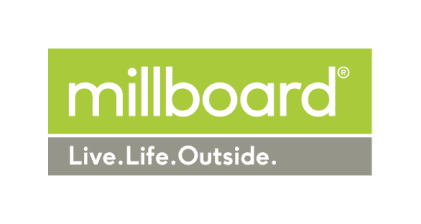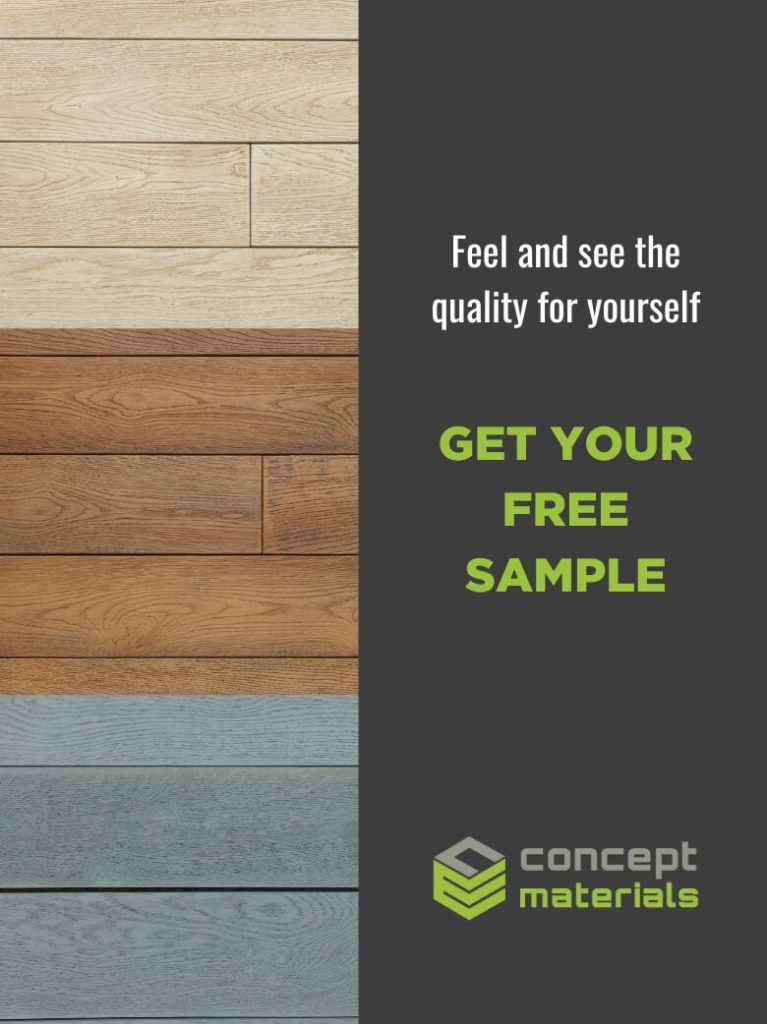External cladding involves adding a layer of protection against exposure to heat, cold, and moisture to a structure’s surface. Now, imagine if you could add this layer of protection to your property while enhancing its aesthetic value and sustainability. This is what Millboard composite cladding can provide, as it offers the following features:
- Moulded from real timbre, giving it authentic grain patterns
- Coated with a polyurethane elastane layer, giving it the rigidity and longevity of plastic and the flexibility of rubber
- Weather-resistant, even in harsher conditions
- Doesn’t leach or stain
- Resistant to decay, warping, and rotting
Moulded from selected timbres and hand-coloured to mimic the subtle nuances of hardwood, Millboard composite cladding is a multi-faceted design material that’s as functional as it is visually appealing. Keep reading to discover the four ways Millboard composite cladding opens design possibilities for architects.
1. It comes in different textures and colours
Millboard cladding features distinct grain patterns derived from the various pieces of timbre it was moulded from. In addition to this wood-like texture, it comes in a collection of finishes that include the following:
- Smoked oak – This silver and grey hue is perfect for contemporary and coastal settings.
- Burnt cedar – Its smooth and charred tones add a dramatic statement to the design.
- Golden oak – The familiar light blonde timbre aesthetic and soft, sandy hues offer a classic feel.
- Antique oak – It provides the warmth and charm of hardwoods.
The versatility of matching these different textures and cladding colours with various surface materials opens design possibilities to architects, allowing them to craft a look unique to each space and project. Millboard cladding mixes well with traditional and contemporary designs and seamlessly pairs with surrounding structures, ensuring consistent design flow.
2. It offers resistance to the elements
A product of years of development, Millboard is a composite material designed to withstand harsh elements while requiring minimal maintenance. This durability and sustainability allow architects to use Millboard cladding for virtually any part of the structure, indoor or outdoor, and in any climate. It also makes it ideal for countries like Australia, where each region has varying weather conditions, such as extreme heat, rainfall, and powerful cyclones.
For example, the distinctive chamfered cut of the cladding profiles allows rain to wash the boards, effectively reducing the need for manual cleaning. This self-sustaining design feature enables architects to ornate exteriors with a high-end aesthetic without worrying about the inevitable warping and rotting when using hardwood. Moreover, Millboard cladding minimises outside noise and offers thermal insulation, making it a perfect design choice for form and function.
3. You can install it in any orientation
Millboard composite cladding can be installed in a horizontal or vertical orientation, with horizontal boards accentuating the structure width and vertically installed ones emphasising height. Plus, they come in two profiles, each providing unique design touches to a structure, including the following:
- Envello Board and Batten: This cladding profile features different angles that create shadow definitions between grain patterns, doubling as drainage when installed horizontally. Aside from its ability to blend with traditional and modern designs, it provides superior impact resistance.
- Envello Shadow Line: This V-Groove board profile is specially designed to replicate smooth timbre, with its flat-grained finish emitting a clean and authentic look. It’s wider than standard timbre boards, providing enhanced grain detail sans the warping and natural wear of hardwood. Furthermore, this profile is designed with oblique angles, preventing moisture collection while helping rain wash over the cladding.
The different profiles and unique features add more layers of design versatility for architects to manipulate as they please (or to adhere to local regulations). And because the functionality is embedded in the cladding design process, there is no compromise between aesthetics and structural integrity.
4. It allows for a clean finish
Millboard offers a collection of corners, trims, and fascia to ensure every element of the cladding project comes together cleanly. The trims perfectly fit Millboard external cladding profiles, allowing easier and faster installation. Meanwhile, the corner profiles and fascia boards enhance other design elements, such as window and door reveals, letting them blend seamlessly with the cladding. These finishings also feature perforated closures to help ventilation while preventing insect infestation.
Final words
As you can imagine, cladding is a critical component of exterior design, protecting the structure from the elements and adding to a building’s visual appeal. Millboard cladding’s profile and colour collection allow architects to cater to clients’ design sensibilities, while the material’s resistance to the elements and sustainable characteristics provide structural functionality.
So, whether you’re going for the rustic appeal of golden oak or the sophistication brought by burnt cedar, there’s a Millboard cladding profile for every property type.








